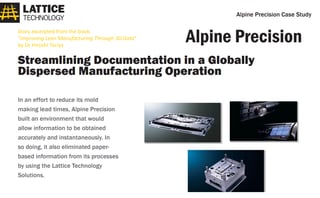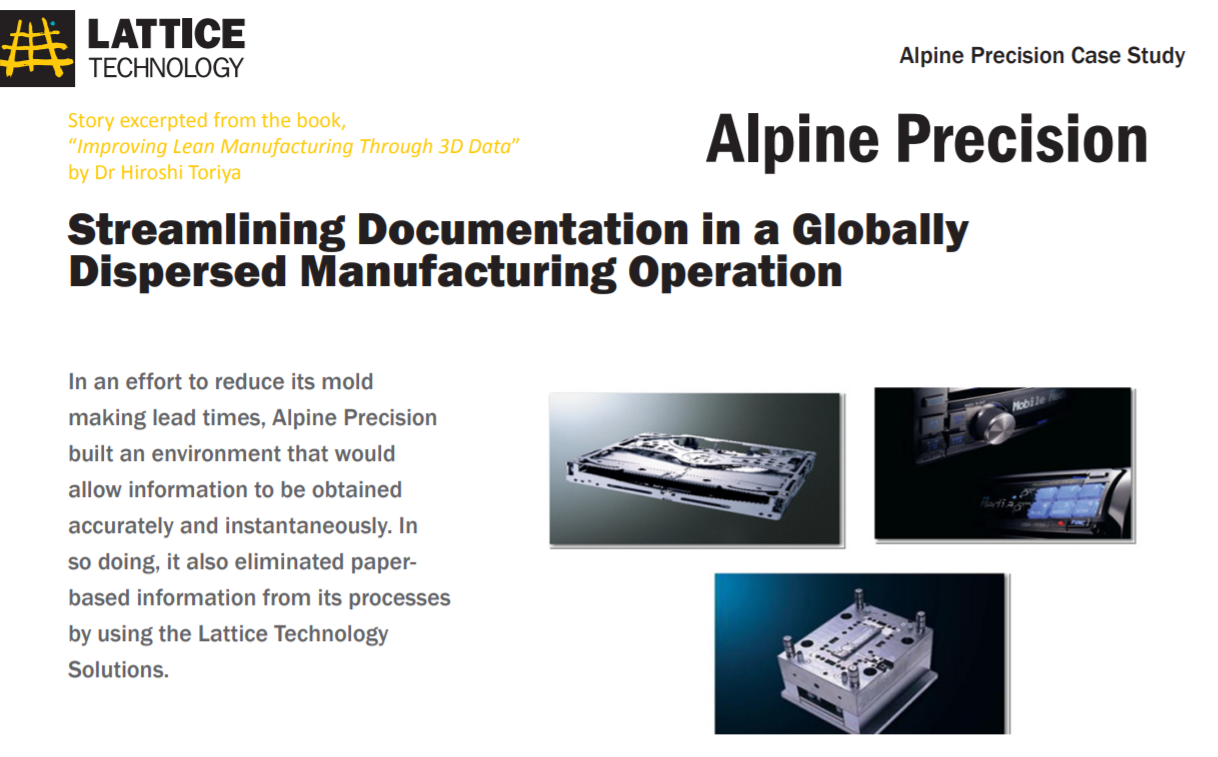Case Study: Alpine Precision, a Mold Maker
Going paperless in manufacturing by relying on 3D models instead of 2D drawings reduces lead time for the this mold manufacturer in the auto industry.
 Why Aim for a Paperless Workflow?
Why Aim for a Paperless Workflow?
The time spent on mold production at Alpine Precision is mainly concentrated in mold manufacturing and mold design; halving the time taken for these two processes would mean the overall lead time would also halve. The company’s success in achieving a paperless process contributed significantly to the reduction of lead times. When paper is used, information inevitably stops wherever the paper stops, making it very hard for the next process to start. However, with digital data, since information flows instantaneously, work does not pause nor stagnate, allowing mold production lead times to shorten dramatically. As a result, Alpine Precision successfully reduced, by 93%, the number of copies made for drawings and reports, which until then had exceeded 5,000 pieces of paper annually. Paper needs to be distributed, managed, and stored, and can also be easily lost, causing a multitude of other problems. Digital data eliminates these hassles. Simply by taking into account the manpower required for managing this amount of paper, the cost-effectiveness of this process is huge.
Benefits of 3D over 2D on the Manufacturing Floor
In one test, they deliberately prepared complicated paper drawings to see how three employees would interpret them. All three interpreted the drawings differently, which means each one could build the molds differently, depending on how they understood the drawings. When the staff were asked to do the same thing with 3D XVL models, they all interpreted the 3D model in the same way - and correctly. This showed the team that XVL quickly and accurately conveys moldmaking information, and demonstrated that communicating information using Interactive 3D work instructions radically enhances mold quality.

